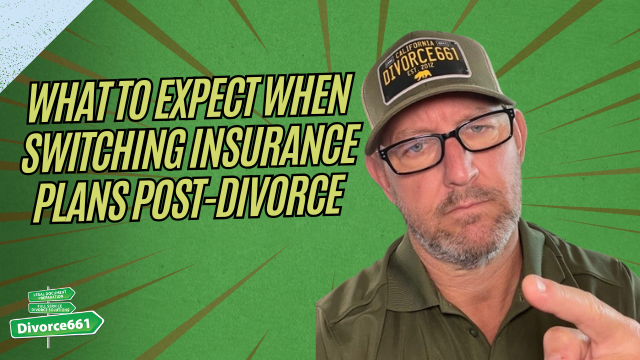What to Expect When Switching Insurance Plans Post-Divorce
I’m Tim Blankenship with Divorce661. One of the big changes that often comes with divorce is switching insurance plans—especially if you were covered under your spouse’s policies. Whether it’s health, auto, homeowners, or life insurance, updating your coverage is essential to staying protected and financially secure. Below I walk you through what to expect, practical steps to take, and how to avoid common pitfalls.
Why updating insurance matters
After a divorce, insurance mistakes can turn small problems into big financial headaches. Policies tied to your former spouse can leave you uninsured, create coverage gaps, or lead to denied claims if ownership and addresses aren’t updated. Taking care of insurance changes early protects your health, your property, and your finances.
“We’ll help you review your coverage, avoid gaps, and make the switch with confidence and peace of mind.”
Health insurance: what usually happens and your options
If you were covered under your spouse’s health plan, you typically lose that coverage once the divorce is finalized. Here are the common options and important timing rules:
- COBRA: You may be eligible for COBRA continuation coverage. COBRA lets you remain on the employer-sponsored plan for a limited time (commonly up to 18 months for loss of coverage), but you pay the full premium plus an administrative fee. It can be expensive, so evaluate cost versus benefits.
- Employer coverage: Check whether your own employer offers health insurance and whether you qualify for enrollment outside the usual open enrollment period due to the qualifying life event of divorce.
- Health insurance marketplace: You can shop on your state’s exchange (for California, Covered California). Losing coverage is a qualifying event that typically triggers a special enrollment period—act promptly to avoid gaps.
- Medicaid/CHIP: Depending on your income and household situation, you or your children might qualify for Medicaid or CHIP (Medi-Cal and California Children’s Services in California).
Timing and avoiding gaps: Plan ahead. Confirm the exact end date of your current coverage and enroll in your new plan before that date. Special enrollment windows are limited—don’t miss them.
Auto and homeowners insurance: update names, addresses, and ownership
Auto and homeowners policies often reflect shared ownership and the residence where you lived as a couple. After moving out or changing ownership, update these policies promptly:
- If you move, get a new homeowners or renters policy for your new residence and make sure your ex removes you from any policies covering property you no longer own.
- If you stay in the home, transfer the policy fully into your name. Confirm that the mortgage lender (if any) is listed correctly and that coverage amounts meet lender requirements.
- For auto insurance, update the policy to match the vehicle title and who primarily uses the car. Notify your insurer of any address or primary driver changes to avoid denied claims or coverage gaps.
- Always inform your insurer about changes in ownership or occupancy. Failure to do so can create liability issues and lead to denied claims.
Life insurance: review policies and beneficiaries
Life insurance is a critical step many people overlook. You need to review both the policy details and the listed beneficiaries:
- Update beneficiaries: If your ex-spouse is currently named and you no longer want them to receive proceeds, update the beneficiary form directly with the insurance provider. A beneficiary designation on the policy generally controls distribution, even over a will.
- Divorce judgment requirements: Some divorce agreements require one party to maintain a life insurance policy with the ex-spouse or children as beneficiaries to secure child support or spousal support obligations. If your judgment includes such requirements, make sure your policy and beneficiary designations match the agreement.
- Policy type and portability: Check whether your term policy can be converted or continued and confirm premium responsibility after divorce.
Real client example: how a missed update led to trouble
We worked with a client who moved out but never updated her homeowners and auto insurance. A seemingly minor accident turned into a claims nightmare: the insurer flagged the wrong address and shared ownership shown on the policy, and claims were delayed and complicated. We helped her transfer and update both policies and get coverage back in her name. That situation could have been avoided with a quick policy review after the move.
Practical checklist: steps to take and documents to gather
Use this checklist to guide your insurance updates after divorce:
- Gather key documents: divorce decree, proof of new address, driver’s license, vehicle titles, mortgage paperwork, and existing policy numbers.
- Confirm the end date of any spouse-covered health plan and request COBRA immediately if needed.
- Check employer benefits and special enrollment options. If you qualify, enroll before your current coverage ends.
- Shop the health insurance marketplace (e.g., Covered California) to compare plans and costs.
- Update auto insurance to match title and primary driver; notify DMV if you change ownership.
- Obtain a new homeowners or renters policy for any residence you move into; transfer or remove names on the existing home policy as appropriate.
- Review life insurance beneficiary forms and update them in line with your divorce judgment and personal wishes.
- Keep written confirmation of all policy changes and copies of communications with insurers.
Final thoughts and how I can help
Insurance changes after divorce don’t have to be confusing or risky, but they do require attention and planning. Start early, confirm deadlines, and make sure your policies reflect your new reality so you don’t face denied claims or coverage gaps later on.
If you’re navigating insurance updates after divorce, visit Divorce661.com and schedule a free consultation. We help clients review coverage, avoid gaps, and make the switch with confidence and peace of mind—long after the paperwork is signed.










